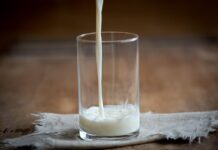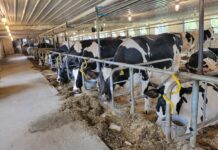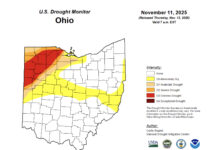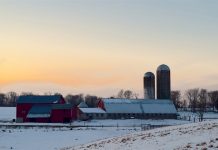By Dianne Shoemaker
Frustrated. That single word does a pretty good job of summing up the mood of many dairy farmers as they look at dwindling feed inventories and less-than-lush fields.
Really frustrated would describe those who are trying to locate forages to purchase to make up for immediate or predicted shortfalls.Situation
There are actually some crops in northeast Ohio that look pretty decent, all things considered. If those fields continue to get just enough rain, they will be all right. However, you don’t have to travel too far to see other crop fields and pastures that make your stomach turn.
Since those crops and fields have to be dealt with, some resources and thoughts on pressing issues: Harvesting drought-stressed corn for silage. Corn that has stopped growing and seems unlikely to recover if and when rain comes, or has poor kernel pollination may be salvageable as a forage crop. All the same rules for good silage making have to be followed. Proper dry matter content at chopping is critical for a good fermentation. Check the dry matter before harvesting the plants — what looks dry in the field may not be dry enough, or too dry. Where you store the corn silage makes a difference in DM requirements. Silage dry matter should be 30 to 35 percent for bunkers, 32 to 38 percent for upright silos, 35 to 40 percent for sealed uprights, and 32 to 40 percent for bags. Check http://dairy.osu.edu for a good article Making Corn Silage in Drought Conditions by Bill Weiss.Nitrate
Questions on nitrate levels and testing for nitrates have been coming in from across the state. Back in 1988 (I’m dating myself here); we were able to make a “quick test” solution for testing for the presence of nitrates in standing corn.
Since the recipe included concentrated sulfuric acid among other things, the ingredients are no longer readily available — and that is a good thing as it was pretty nasty stuff. Now we have a good list of labs both in Ohio and elsewhere that will test for nitrate levels in both fresh plants and feeds. If the lab knows that you are making harvest decisions based on their results, many will prioritize these samples. This list is also available at our dairy website. Why the questions about nitrates? Many drought-stressed plants such as corn plants being harvested “early” may have taken up nitrogen as nitrate, but have not been able to metabolize or “use” it because of the lack of water. High nitrate levels can cause ill health including death in animals that consume the plants. At less than toxic levels, feeds can be carefully included at lower rates in the animal’s ration without causing problems. However, nitrate levels have to be known to do this successfully. Fortunately, the ensiling process can reduce nitrate levels to a certain extent. Adjusting chopping height up can also help to reduce nitrate levels in silage as the highest concentrations are usually closest to the ground. Another caution: nitrate levels in a plant can increase right after a rain as the plant begins taking up nutrients again. When in doubt, have the levels checked. Again, a good article is available at http:// ohioline.osu.edu/as-fact/0003.html.Feed costs
Whether you are currently dealing with crop issues or not, feed costs will be a serious issue for the next year. I know many folks do not really enjoy dealing with the financial side of the business, but it will be more important than ever to know exactly where the dollars are, where they are going and how cash reserves are faring.
If decisions are made to reduce cow numbers to match feed resources, work with your tax consultant to fully understand and plan for the tax implications of these sales. Some of the dollars in the check will likely have to be shared with Uncle Sam. Issues will continue to unfold as the season progresses. I certainly hope that we will all get enough rain and that they will be nonissues or at least lesser in magnitude soon. Meanwhile, check http://dairy.osu.edu and http://agnr.osu.edu/managing-drought-2012 for updates on weather-related issues that affect Ohio’s dairy farms. (The author is an OSU Extension field specialist in dairy production economics. Send comments or questions in care of Farm and Dairy, P.O. Box 38, Salem, OH 44460.)











